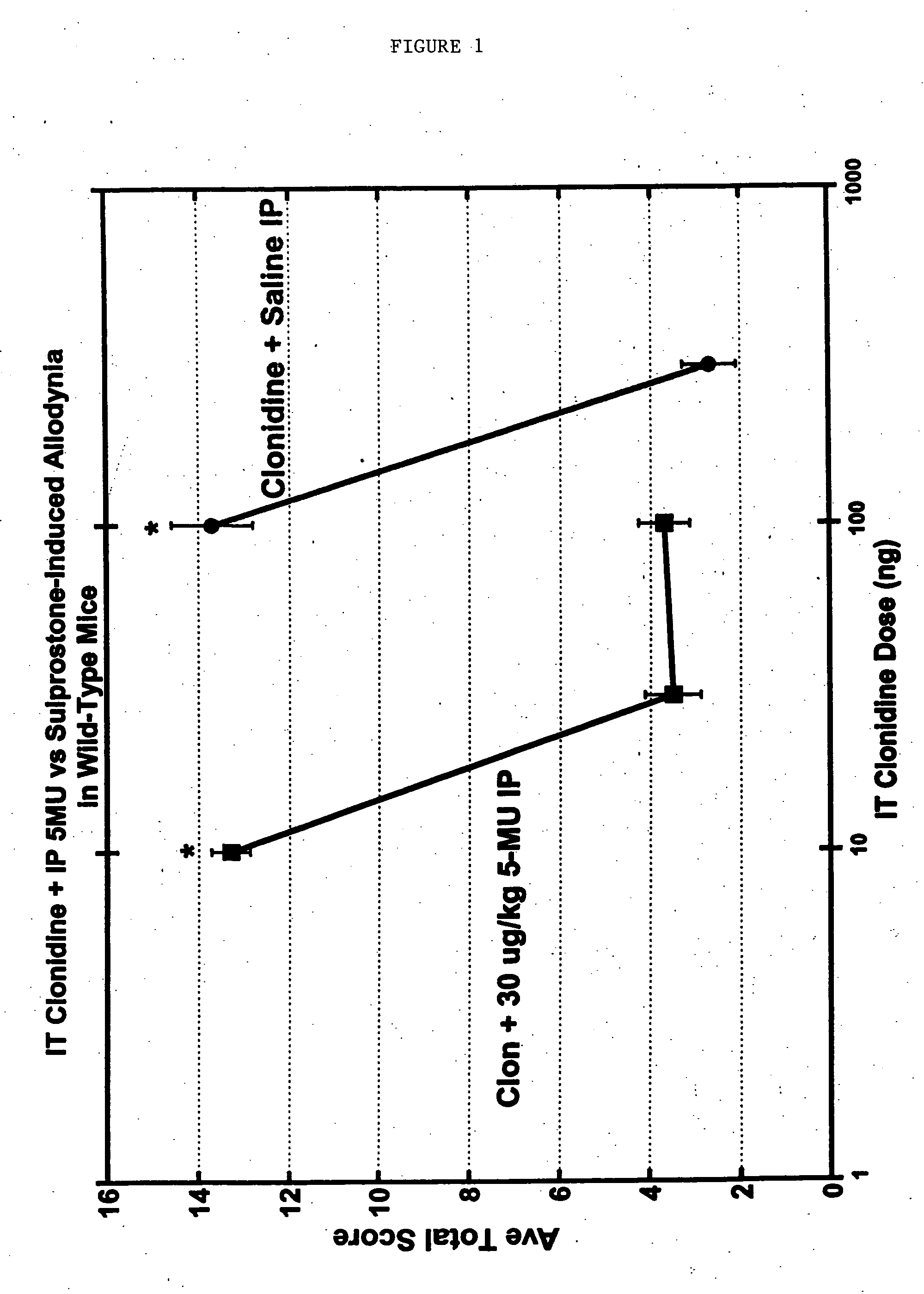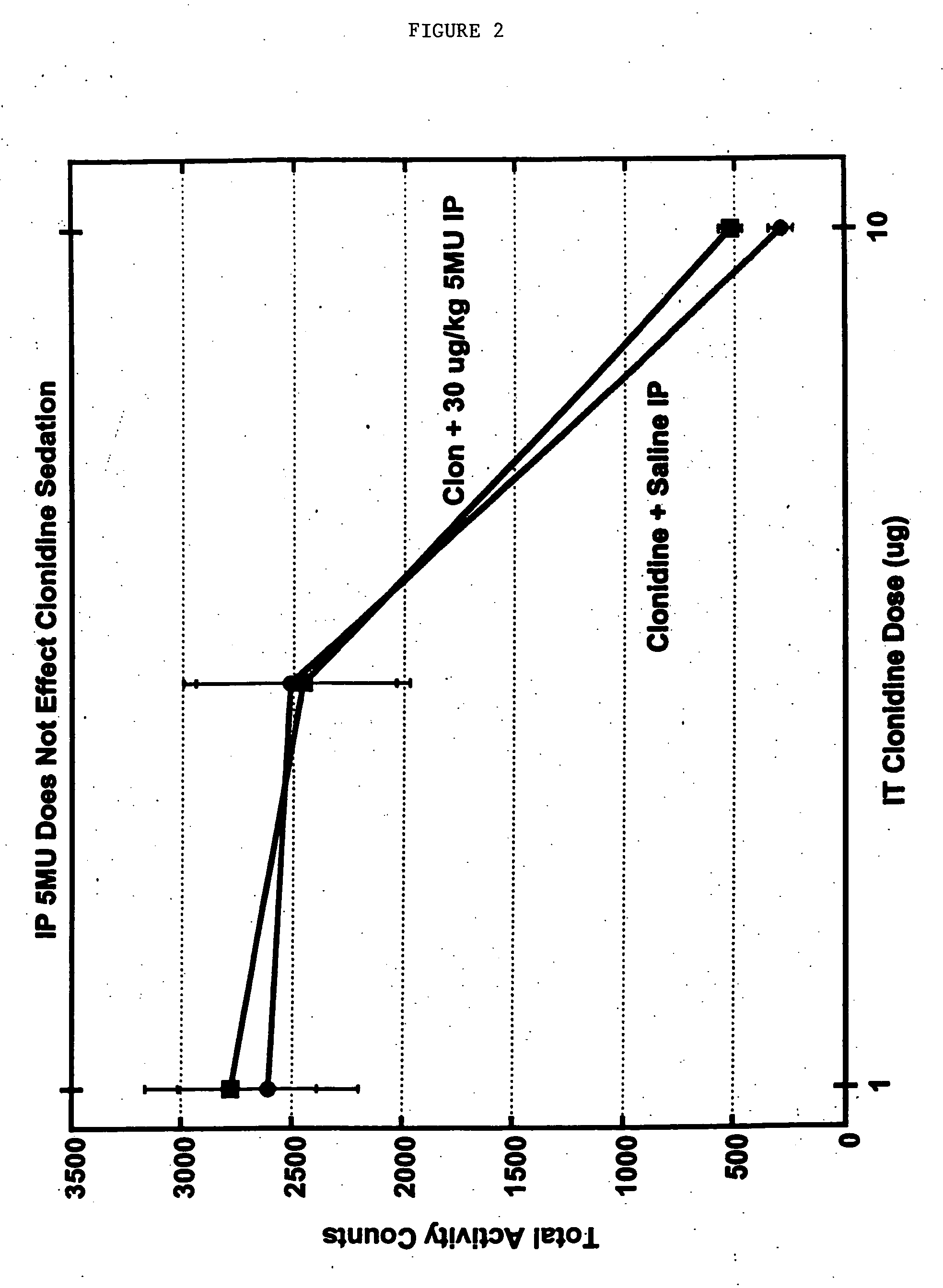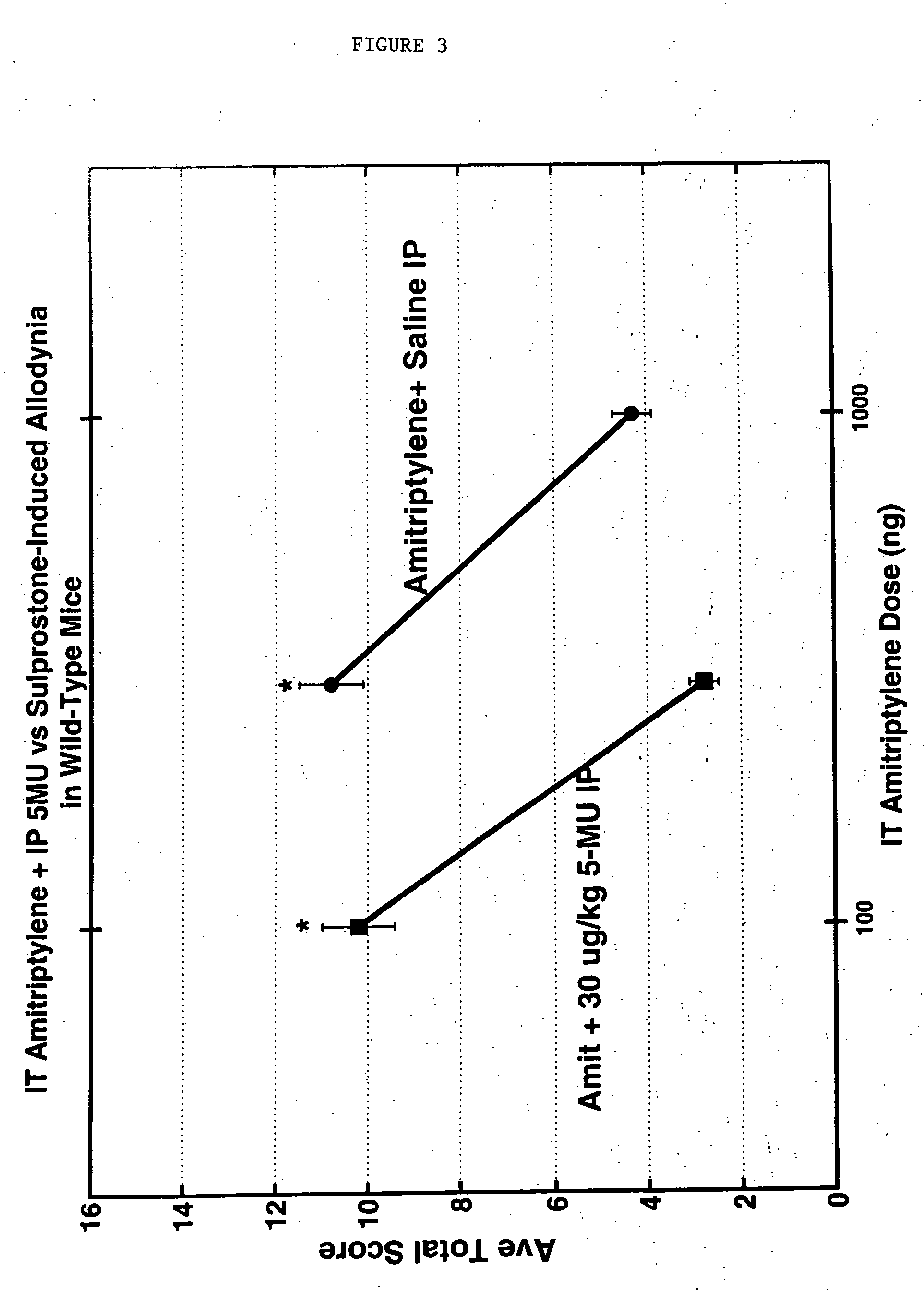Methods and compositions for the treatment of pain and other alpha 2 adrenergic-mediated conditions
a technology of alpha 2 adrenergic and pain, which is applied in the field of methods and compositions for the treatment of pain and other alpha 2 adrenergicmediated conditions, can solve the problems of limited use of non-selective alpha-adrenergic blockers, 2 receptor agonists, and ineffective use of agents, etc., to achieve the effect of increasing the sedative activity and increasing the therapeutic activity
- Summary
- Abstract
- Description
- Claims
- Application Information
AI Technical Summary
Benefits of technology
Problems solved by technology
Method used
Image
Examples
example 1
Alleviation of Chronic Pain with Coadministered Alpha 2 Agonist and Alpha 1 Antagonist
[0090] A model for chronic pain (in particular peripheral neuropathy) involves the surgical ligation of the L5 (and optionally the L6) spinal nerves on one side in experimental animals. Rats recovering from the surgery gain weight and display a level of general activity similar to that of normal rats. However, these rats develop abnormalities of the foot, wherein the hindpaw is moderately everted and the toes are held together. More importantly, the hindpaw on the side affected by the surgery appears to become sensitive to pain from low-threshold mechanical stimuli, such as that producing a faint sensation of touch in a human, within about 1 week following surgery. This sensitivity to normally non-painful touch is called “tactile allodynia” and lasts for at least two months. The response includes lifting the affected hindpaw to escape from the stimulus, licking the paw and holding it in the air fo...
example 2
Alleviation of Chronic Pain with Coadministered TCA and Alpha 1 Antagonist (5-methylurapadil).
[0101] Tricyclic antidepressants (TCAs), a commonly prescribed antidepressant and analgesic, indirectly stimulates the alpha 2 receptors by inhibiting norepinephrine uptake.
[0102] Experiments carried out in a manner similar to those described in Example 1 above are performed using the sulprostone-induced allodynic mouse models and the TCA amitriptylene. This compound and its synthesis are described in U.S. Pat. No. 3,205,264, hereby incorporated by reference herein.
[0103] Amitriptylene is dissolved in 50% DMSO at the indicated doses and injected in a volume of 5 ul intrathecally into each mouse, in conjunction with either a 30 ug / kg IP injection of 5-methylurapadil or with a similar injection of saline. Paint brush stimulation as described in Example 1 was scored, and the results are shown in FIG. 3. As with the combination of alpha 2 agonist and alpha 1 antagonist, amitriplylene in comb...
example 3
Alleviation of Chronic Pain with Coadministered Alpha 2 Agonist and Alpha 1 Antagonist (Prazosin)
[0105] Using methodology similar to that described for the sulprostone-induced allodynia model, an intraperitoneal dose of the alpha 1 antagonist prazosin (100 ng / kg) has no effect on its own (pain score=4.8±0.6) or in the sulprostone-induced allodynia model (12.8±0.8).
[0106] Prazosin is administered to mice 15 minutes before administration of the sulprostone and various intrathecal doses of clonidine (0.03, 0.1 and 0.4 micrograms in a 5 microliter volume of 50% DMSO). The clonidine dose response for analgesia upon coadministration of the alpha 1 antagonist is as follows: 13.3±0.9 for the 0.03 microgram dose, 4.8±0.8 for the 0.1 microgram dose, and 4.8±0.6 for the 0.4 microgram dose. This represents approximately a four-fold decrease in the EC50 for clonidine as compared to i.t. administration of clonidine alone.
[0107] Thus, the administration of both the A2AA and alpha 1 antagonist a...
PUM
| Property | Measurement | Unit |
|---|---|---|
| pH | aaaaa | aaaaa |
| pH | aaaaa | aaaaa |
| volume | aaaaa | aaaaa |
Abstract
Description
Claims
Application Information
 Login to View More
Login to View More - R&D
- Intellectual Property
- Life Sciences
- Materials
- Tech Scout
- Unparalleled Data Quality
- Higher Quality Content
- 60% Fewer Hallucinations
Browse by: Latest US Patents, China's latest patents, Technical Efficacy Thesaurus, Application Domain, Technology Topic, Popular Technical Reports.
© 2025 PatSnap. All rights reserved.Legal|Privacy policy|Modern Slavery Act Transparency Statement|Sitemap|About US| Contact US: help@patsnap.com



